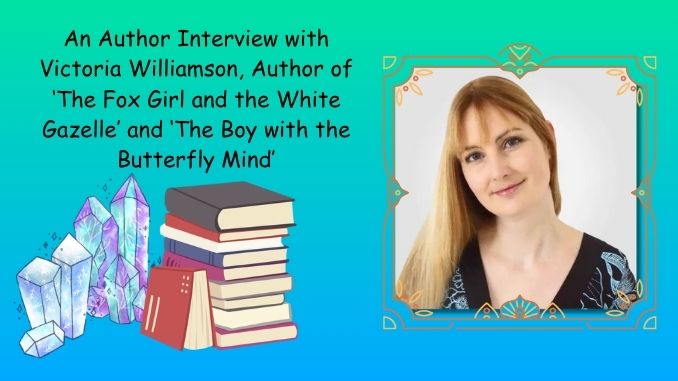
Hey, hey, hey, everyone!! Isabelle Knight here again with something super exciting and something I have always wanted to do but never dared to do!!!!!!!!!!!!!!!!!!!!!!!!!!!!!!!!!!!!!!!!!!!!!!!!!!!!!!!!!!!!!!! So a few weeks ago, I read (and LOVED) an amazing book, The Fox Girl and the White Gazelle, and I also read the next book in the series. Aaand, well, let’s just say I reached out to the author and asked to do an interview on my blog… SHE SAID YES!!!!! I screamed when I saw her email hehe… And no, I kid you not. I’m the kind of person who screams when something exciting happens.
Anyway, without further ado, I present to thee… VICTORIA WILLIAMSON!!!!!!!!! (sorta. I mean, this is a Q&A, so she’s not here in person, but these are her answers, and I think I’m confusing myself…) Anyway, eeek!!!! It was so so amazing to be able to reach out to her and have her actually reply!!! So here’s the Q&A we put together!!!!
Q1: What inspired you to write The Fox Girl and the White Gazelle?
I worked as a teacher for a number of years, and one of my teaching jobs was in a primary school with young children whose families were seeking asylum. They all had very different background and stories, but they also had many things in common, such as facing the challenges of learning English and adapting to a new culture and local environment (Scotland was a lot colder than the countries where most of the children came from!). One thing that was particularly interesting was seeing the way in which close friendships developed between children in the class – some of whom were refugees and were new to the area, and some of whom were from the local housing estate. It got me thinking about the ways in which children had a lot to teach adults about overlooking and overcoming differences, and how these children were far more focused on the things they had in common. I thought that this theme of cross-cultural friendship would make a good children’s book. Some years later, when I started writing the book, the war in Syria was in the news, and I thought it would be interesting to have one of the characters come from Syria as a refugee, and another come from the local housing estate in Glasgow. Real life quite often inspires my contemporary issue books, as I think it’s important for authors to help young readers understand the issues that they see on TV and face in their daily lives in school.
Q2: I know one of the main characters in the book, Reema, is a Syrian refugee and a Muslim. How did you approach writing about Reema’s culture and what it was like for her being a refugee?
Having worked as a teacher with children who are Muslim, and with children whose families were seeking asylum, I had some experience of the issues that might face a child like Reema when coming to settle in Scotland. The Scottish Refugee Council also really helped me with my research for the book, by putting me in contact with adult refugees, some of whom were Muslim, and all of whom had their own stories to tell of having to leave home to find a safe country to settle in. I learned that everybody’s story was very different, and there was no one ‘correct’ way to portray Reema and her family’s experiences of the Syrian war and the challenges they faced settling in Scotland. I therefore based her story on a some of the broad themes that refugees discussed with me, and on the common challenges that I’d seen children with a refugee background face in school when I was a teacher. I also made sure I got diversity readers to check over the story while it was at the draft stage, to ensure I portrayed anything related to Reema’s Muslim background sensitively, and to make sure I got the Arabic phrases I used in the book right.
Q3: Do you have a favorite character from your books? Why?
Ah, that’s so difficult to answer! I like all of the main characters I write – I have to, because I spend so much time in their heads seeing the world through their eyes in order to write a story from their point of view. In The Fox Girl and the White Gazelle, I like Caylin and Reema equally even though they’re so different, because they’re both brave and they both try so hard to overcome the challenges they face in life.
I think if I had to pick a character I liked who is often overlooked, I would pick Paige Munro in The Boy with the Butterfly Mind. Generally, most readers tend to focus on the main characters in books, but sometimes it’s the quieter sidekick characters who are actually the most important in terms of helping the main characters to achieve their aims on their ‘Hero’s Journey’. For example, in The Lord of the Rings, it’s Samwise Gamgee who helps Frodo to destroy the ring of power in Mordor – Frodo wouldn’t have been able to do this on his own without help. In The Boy with the Butterfly Mind, Paige is the ‘quiet’ character in the book – the class mouse who nobody likes and who everybody ignores. Elin dislikes her intensely, as Paige is the one person in school less popular than Elin herself, and she’s afraid that Paige’s repeated attempts to befriend her will ruin any chance she has of making it into the popular crowd. As the story unfolds, we get to see Paige’s hidden strengths, and Elin finally learns the lesson from Paige’s example of what it really means to be a good person:
“Ever since Dad left I’d been tying myself up in knots trying to prove to him how perfect I was so he’d come back again. It had taken Jamie turning my family inside out before I realised Dad had never left me, and all I had to do to get him back in my life was to stop making the people he cared about into fairy-tale monsters.
I’d got it wrong for so long. I thought being perfect meant sucking up to teachers and sticking to the rules no matter who I hurt along the way. I was so busy trying to look good on the outside I didn’t realise how ugly I was on the inside. I didn’t need to be perfect.
All I had to be was kind, just like Paige.”
Q4: What’s your favorite part of the writing process?
The ideas and research stage is always the most fun! This is the part where I get to daydream, doodle, play about on the internet, talk to interesting people, and generally just have a great time planning how I’m going to write a book without actually doing any of the hard work! At some point I need to get down to writing, though, and while I do enjoy this, it can at times be a bit of a hard slog on days when I feel like I’m lacking inspiration or motivation. The ideas part is where a lot of aspiring authors get stuck – they have great ideas for their books and really enjoy planning novels and doing lots of research, but they struggle to move on to the actual work of writing the book. Getting the first chapter written can be really rewarding, though – a bit like getting on a plane after planning an interesting trip somewhere. You know that the journey is going to be long and might be difficult and tiring, but it’ll be worth it in the end, and once you’re on the plane, you feel like you’re actually underway and the journey then goes from being just an idea in your head to an actual reality.
Q5: Do you have any books written under a secret pen name? (this is just a random question I ask every single author… hehe.)
I don’t have a pen name, but I do write other things apart from children’s books for publishers under my own name. I write books for 9-11 year olds for the education company Twinkl, which at the moment just have the Twinkl Orginals’ logo on them as opposed to an author name, but it’s not really a secret who has written them, as I do post about these books on social media and they’re listed on my author website. I also write adult ghost and horror story novellas and anthologies, but these are also written under my own name. Maybe in future if I decide to write in a really odd genre I might use a pen name, but at the moment I write children’s, teen and adult contemporary issue, fantasy, science fiction, dystopian, historical, ghost and horror stories under my own name, so I don’t really feel the need to change it!
Q6: Do you have any quirky writing habits?
Nothing bizarre, although I do seem to drink gallons of peppermint tea while I’m writing! I can’t drink coffee as the caffeine keeps me up all night, and like most writers I like to have an excuse to put my computer down once in a while and wander into the kitchen to waste some time faffing about with a kettle before I get back to work!
Q7: How did you approach writing a book with two different main characters? Was it hard for you to write it and did you have to write each character’s story separately? Because I’ve heard of a few authors who, when they write a book with two different main characters, found that one character’s personality often seeped into the other’s. Did that ever happen to you?
This didn’t happen with The Fox Girl and the White Gazelle as I made a deliberate decision before I started writing the book to make sure the characters’ voices would be as different as I could possibly make them. I did this by writing Caylin’s voice in a ‘Scottish’ style with slang words and contractions – things like “isn’t” and “wasn’t”. On the other hand, I wrote Reema’s voice in a more lyrical and formal style, and she doesn’t use contractions, she says things like “is not” and “was not”. This is because there aren’t contraction in Arabic the way there are in English, and I wanted to emphasise that although Reema was learning English, she was narrating her story as if she was thinking in Arabic in her head (although the reader is seeing English words on the page). I think this worked to keep the voices very different, also it was clear to the reader which character’s point of view they were reading from. I also kept the voice of the fox, Hurriyah, different, by having the fox narrate through poetry rather than prose, as I imagined the fox thinking in a different way to humans.
It was a little trickier with Elin and Jamie’s voices in The Boy with the Butterfly Mind, as both characters are British with similar backgrounds. I got round any confusion by having Elin narrate in the past tense, and Jamie narrate in the present tense, reflecting the fact that his ADHD makes him focus on things that are grabbing his attention in the present and distracting him.
Q8: What did the first draft of The Fox Girl and the White Gazelle look like? How many drafts did you do to get to the final draft?
The first draft was similar to later drafts, although there were a number of changes that were made over the course of several drafts. These were mostly changes to the order of events or where and how the scenes took places – things that helped with the flow of the story and kept everything clear. I think there were about three drafts of the story, with the third draft being the final one that my publishers and I did the line edits and copy edits on. (Just for readers who aren’t sure, line edits are when editors and authors go over each line to check that the sentences flow nicely, and to switch out words and phrases which could be written better. Copy edits are final checks to make sure that the spelling, punctuation and grammar is all correct before the book is typeset into its final format for publication).
Q9: What was the most amazing part about writing The Fox Girl and the White Gazelle and The Boy with the Butterfly Mind? Why would you pick that to be the most amazing part?
There are several great things about writing a children’s book. The first is seeing your book in print – holding a printed copy of it and seeing it in bookshops. After The Fox Girl and the White Gazelle was published, I had a friend send me a photo of the book taken in a bookshop in Minneapolis, and it was really exciting to see that it had made it across the pond! The other great thing is being able to go into schools to talk to children about my books, especially when children have been studying one of them as a class novel. It’s great to hear children’s views on reading The Fox Girl and the White Gazelle and The Boy with the Butterfly Mind, as sometimes they identify very strongly with the experiences of one of the characters, or other times they tell me they’ve learned something they didn’t know before. It also gives me the opportunity to hear children’s imaginative ideas for their own stories and to encourage them to write, and I love the idea that one of the children from a class I visited might one day be an author themselves!
Q10: And the final question that I ask every author, what is your advice for young writers like me who want to write books, get published, and maybe even become bestsellers, and how do you stay motivated during tough writing days?
One thing I always say to aspiring writers, is ‘don’t write in a vacuum’! I made that mistake early on – I wrote by myself and thought I should only emerge from my little writing bubble once I had a completed novel to show the world. Writing can be a very lonely business, and the best thing to do is to connect with other authors as early as possible in your writing career, by joining writing groups and chatting to other writers. That way you not only get feedback on your work and learn how to give feedback to other people, but you also have a support network for the times when writing gets tough, when rejections from agents and publishers get you down, and for working through tricky plot points when you get stuck during an early draft!
Entering writing competitions is a great way to get feedback about your work, build up your confidence, and give you the motivation to keep writing and get your work finished by giving you a goal to aim for.
For writers in the UK, competitions are listed in places such as the School Reading List Website here: https://schoolreadinglist.co.uk/competitions-for-children/childrens-writing-competitions/
The Scottish Book Trust also features opportunities and information on its website here: https://www.scottishbooktrust.com/writing-and-authors/opportunities-for-young-writers – you might like to sign up to their newsletter to find out about other opportunities and competitions they run throughout the year, as getting involved in these and speaking to other writers is a great way to stay engaged and to get encouragement and feedback on you work.
I’m sure there are lots of organisations running competitions for young writers in the USA – maybe this is a list you could compile for another blog post!
If you’ve got a completed novel you’d like to send to a publisher, the best way to do this is to start by finding an agent. Most publishers don’t accept submissions directly from writers and ask authors to submit through an agent. In the UK, agents and publishers are listed in The Children’s Writers’ and Artists’ Yearbook – you can borrow a copy of this for free from your local library, or order it from them for free if they don’t have a copy in stock. This book is a good resource as it also has articles giving advice to writers about how to craft a submission letter to an agent, how to decide what genre and age group your book is for, and what the appropriate length should be. I’m sure there’s an equivalent book or resource in the USA – maybe this is something you could look into for your readers!
And don’t forget, if you’ve got a piece of writing you’d like some feedback on, then children’s authors like me are often happy to read your work and send you a reply!
****************
Aaaand, this is me again!!! (It’s Isabelle in case you didn’t know. XD). Victoria Williamson, thank you so much for doing this interview!!!! It’s really amazing to be able to connect with authors whose books I LOVE and have them reply!!! And thank you so much for writing those two books!!! They’re amazing and one of my favorite books of all time!!! The list keeps growing and growing… I’ll definitely have to check out more of your books!
And yeah, that’s the Q&A!!! Thank you guys so much for coming, and I hoped you enjoyed reading this as much as I did putting it together!!!!! I shall see you in the next post!
Isabelle
P.S. Oh, I forgot something! There’s this writing community/blog that I just HAVE to recommend!!! It’s owned/managed by my awesome writing buddy, Leah Larkspur!!! And it’s amazing! She has a really fun blog and the people in the forums are amazing! I wish I could put together something like that… But I fear tech hates me enough as it is… But if you ever want to check it out, head to theinkpotclub.com! It’s amazing!

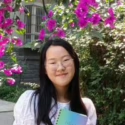
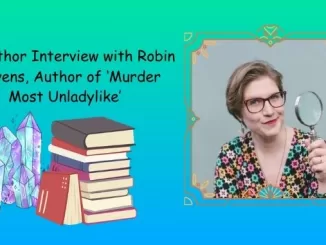
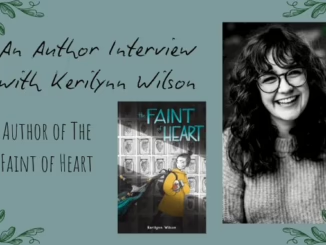
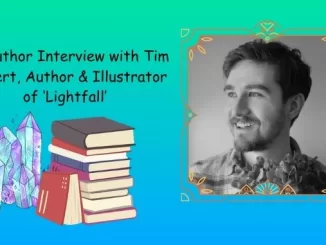
Lovely Q&A, Isabelle!! You ask some good questions, and Victoria Williamson has equally lovely answers!
Hi! I’m glad you like the interview!!! Putting this together was so exciting! And her books are amazing! (you should check them out! XD)